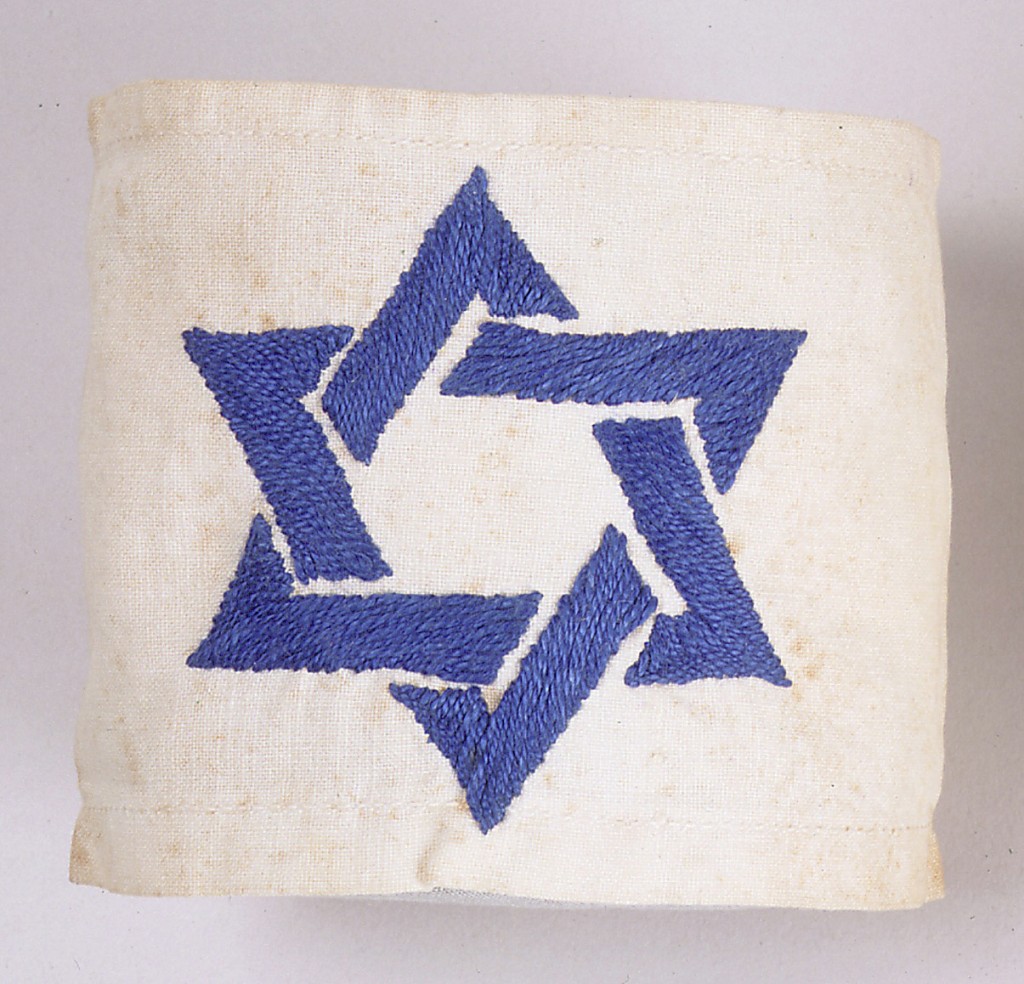
Jewish Badge: Origins
Decrees that ordered Jews to wear special badges for purposes of identification were not exclusive to the Nazi era. Over the course of more than ten centuries, Muslim caliphs, medieval bishops, and, eventually, Nazi leaders used an identifying badge to mark Jews.
Key Facts
-
1
Decrees ordering identifying badges were rarely isolated acts. They were often part of a series of anti-Jewish measures designed to segregate Jews from the rest of the population and reinforce their inferior status.
-
2
With the coming of the French Revolution in the 18th century and Jewish emancipation in the 19th century, the "Jewish badge" disappeared in western Europe.
-
3
When Nazi officials implemented the Jewish badge between 1939 and 1945, they did so in an intensified, systematic manner, as a prelude to deporting Jews to ghettos and killing centers in German-occupied eastern Europe.
Origins of the Badge
Muslim rulers in the 8th C CE were the first to introduce the badge to identify Jews and Christians within the Muslim population.
Jews and Christians living under Sharia Law were considered “People of the Book,” whose belief in the God of Abraham predated the founding of Islam. As such they were accorded the right to freely practice their faith in private and to receive state protection. In turn, they paid a special tax called jizya ("tribute") and were often compelled to wear an identifying mark to indicate their status.
The design and style of badges for Jews varied. Under Caliph Haroun al-Rashid (807 CE), Jews in Baghdad had to wear yellow belts or fringes. Under Caliph al-Mutawakkil, (847-61) Jews wore a patch in the shape of a donkey, while Christians wore a figure in the shape of swine. In 1005, Jews in Egypt were ordered to wear bells on their clothes.
It should be noted that under the caliphate these marks of identification were not necessarily intended to be punitive. They were meant to both reinforce the dhimmi (protected religion) status of Jews and Christians which gave them certain rights and protections, while at the same time publicly branding them as socially inferior to Muslims.
Identifying Markings during the Middle Ages
During the Middle Ages, European kings and popes continued the practice of compelling Jews to wear distinguishable clothing or markings.
On November 11, 1215, in Rome, Pope Innocent III convened the Fourth Lateran Council. It was one of the largest ecumenical councils ever to assemble. The Council decreed that Jews and Muslims were to wear identifying markers or clothing at all times that made them readily distinguishable from Christians. It was the last stage in a series of measures by the Church to inhibit social contact between Jews and Christians. Issued as Canon 68, the decree became the basis of the subsequent imposition of a so-called Jewish badge in Christian kingdoms.
The Papal order was most successfully enforced in England, where, in 1217, King Henry III ordered male Jews to wear a badge on the front of their outer garments. In 1275, King Edward I specified the color of the badge and its size. Jews over the age of seven were required to wear a piece of yellow taffeta, six fingers long and three broad, over the left chest of the outer garment.
In England the badge took the form of the Tablets of the Law, (the Ten Commandments), considered to symbolize the Old Testament. In French territories beginning in 1217, the authorities decreed that Jews wear “rota,” circles of red or yellow felt in the front and back of their clothing. However, in Spain and in Italian territories, the wearing of distinctive badges—usually in the form of a yellow circle—was enforced only sporadically. In German-speaking Europe, a Judenhut (or “Jew's Hat”), a cone-shaped pointed headdress often seen depicted in medieval literature, was required.
By 1500, the wearing of the “Jew's Hat” had declined in most of western Europe, while the yellow badge endured and became more common. With the coming of the French Revolution in the 18th century and Jewish emancipation in the 19th century, the “Jewish badge” disappeared in western Europe.
It should be noted that the badge rarely depicted the Star of David, featured so prominently during the Nazi era.

